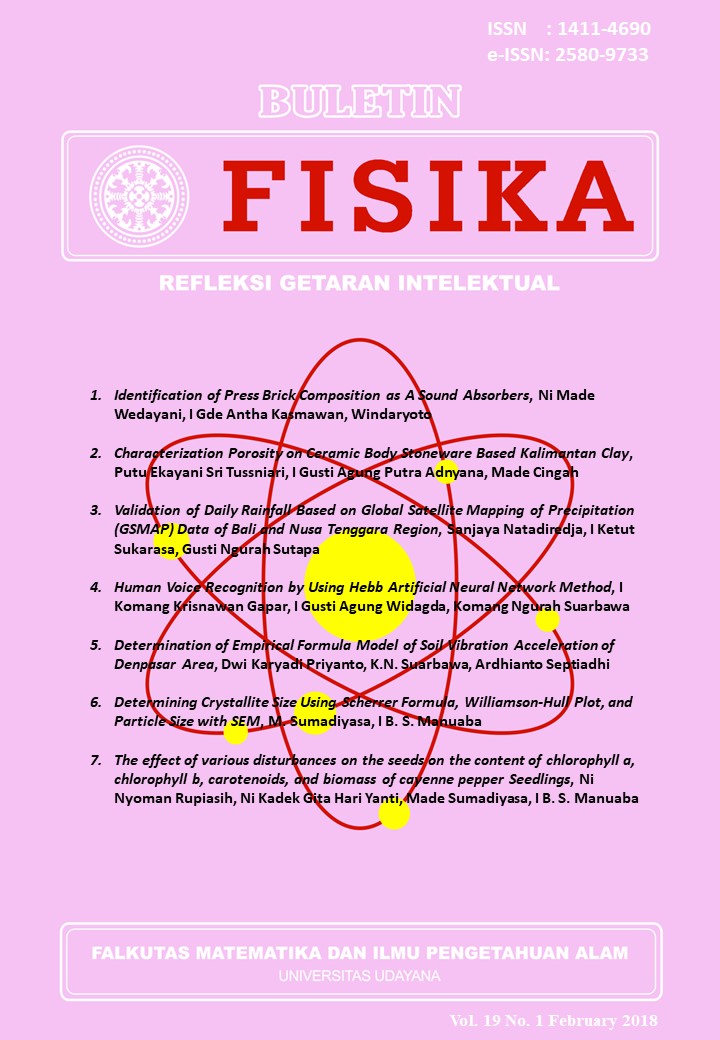Validation of Daily Rainfall Based on Global Satellite Mapping of Precipitation (GSMAP) Data of Bali and Nusa Tenggara Region
Abstract
Limitations of observation data cause analysis and prediction of precipitation is difficult. One way to overcome such limitations is the use of satellite data such as GSMaP, but satellite data needs to be validated before use. This study aims to validate GSMaP rainfall data on observation data in Bali and Nusa Tenggara. Through monthly time series analysis, GSMaP rainfall data tend to have smaller value than observation data, but it has similar data pattern in each region with rain pattern that occurs in November to March (NDJFM). While validation between GSMaP satellite rainfall data and observation using Pearson and RMSE correlation and MBE at each location showed strong positive correlation value (> 0.5), correlation value obtained from each location from 0.82 to 0.93 with RMSE value from 2.08 to 5.51 and MBE values ??from 0.23 to 0.89, this indicates that GSMaP satellite data is valid and can be used to fill in empty data especially in 5 observation areas ie Denpasar, Ampenan, Sumbawa Besar, Bima and Kupang.
Downloads
References
[2]. McCollum, J. R. and R. R. Ferraro, Next generation of NOAA/NESDIS TMI, SSM/I, and AMSR-E microwave land rainfall algorithms, J. Geophys. Res., vol. 108, 2002, p. 8382.
[3]. Sabins, F.F., Remote Sensing Principles and Interpretation, W.H. Freeman and Campany. USA: San Francisco, 1977.
[4]. Aldrian, E. and Susanto, D.R, Identification of Three Dominant Rainfall Regions Within Indonesia and Their Relationship to Sea Surface Temperature, Int. J. Climatol., vol. 23, 2003, pp. 1435-1452.
[5]. Moriyama, T., Principles of Remote Sensing, Diktat Lucture in Udayana Universty. Denpasar-Indonesia, 2005.
[6]. Fadholi, Akhmad, Persamaan Regresi Prediksi Curah Hujan Bulanan Menggunakan Data Suhu dan Kelembapan Udara DI Ternate, Pangkalpinang: Statsiun Meteorologi Depati Amir, 2011.











